Altra Paradigm (2014)
Unless you’re a complete stranger to our pages, you’re probably aware that running shoe design is moving fast. After a long period of living with most running shoes built in the same relative frame of reference (high ramp, carved arches, foams of various density), the hot ticket became minimal. For several years, that was where progressive runners went – and I was among them.
The new trend is exactly the opposite of minimal; it’s fat, pillowy, and fully endorsed by the Michelin Man. Pioneered by Hoka One One, we now see low-drop, thick cushioned shoes with a host of interesting methods for adding guidance or stability. New foam materials and construction methods allow many of these shoes to maintain a reasonable weight – bonus!
Hoka’s shoes all feature low or moderate drop (by my standards) – something that I think is a step in the right direction for many runners. But… what if you’re a dedicated zero-drop-shoe-wearer? What if you don’t want any ramp in your shoe? Hoka doesn’t have an option for you. To be fair, they seem to have reasons for their ramp design, and that’s a-okay with me. I’m just sayin’ that sometimes folks have their mind set on a certain feature, and they’ll shop until they find it (a good example is the desire for all-carbon clincher rims – some triathletes MUST have it).
If high cushion and zero drop are your thing(s), I have good news – Altra has your shoe. It’s called the Paradigm, and is the subject of today’s review. I personally like to keep some zero drop shoes in my rotation, so these had my interest immediately.
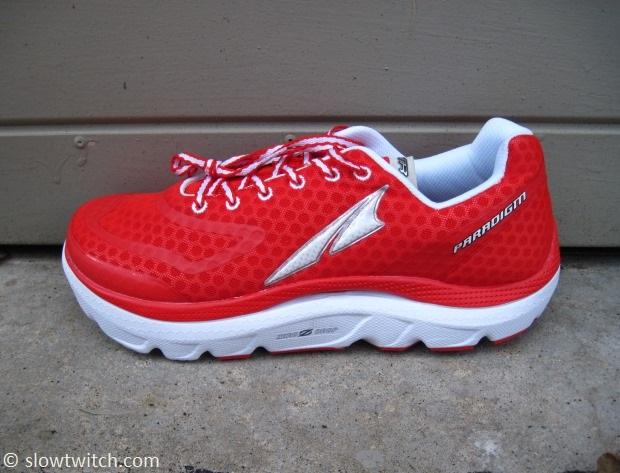
Let’s take a look at the numbers.
2014 Paradigm specs:
MSRP: $130
Sizes: 7, 7.5, 8, 8.5, 9, 9.5, 10, 10.5, 11, 11.5, 12, 12.5, 13, 14, 15
Weight: 9.1 oz men, 7.9 women
Heel-to-toe offset (ramp): 0mm
Stack height: 34mm advertised
Insole: 5mm ‘sculpted’
Widths: One
Category: Neutral
Colors: Red/White or Blue/Yellow
Women’s version available: Yes
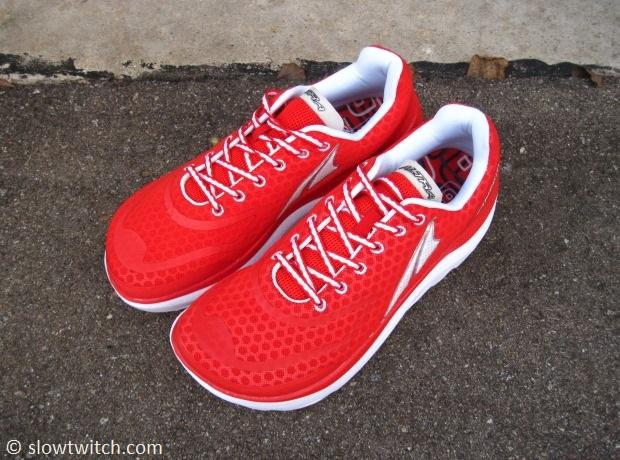
Altra originally listed the weight at 10.5 ounces, matching their not-as-thick Provision 1.5 shoe (which we reviewed earlier this year – linked at the bottom of this page). I thought that was fairly interesting, and that something tricky was done with foam and materials to achieve this weight. Since that time, however, they’ve dropped the weight of the production version even further, to 9.1 ounces for the men’s version. While that’s no super light track shoe, it’s very light for a shoe of this size. In comparison, Hoka’s new Conquest is quoted at 11.8 ounces. My standard go-to shoe for many activities is the Saucony Kinvara, which is definitely lighter than these super-shoes, at 7.7 ounces.
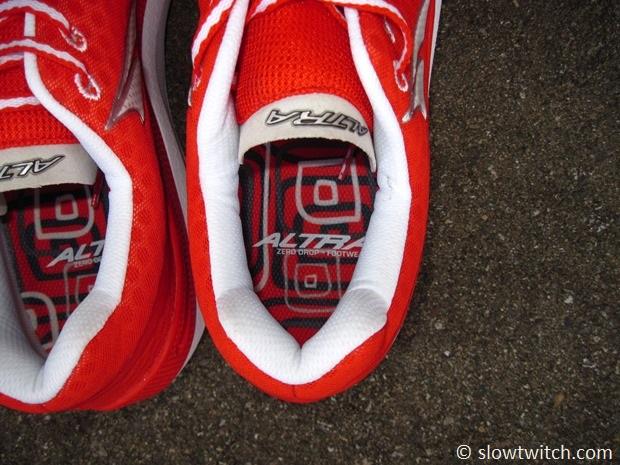
How does the thickness stack up? As usual, I asked a slew of questions during my research: what’s the thickness of the insole, midsole, and outsole – individually, and all together? What is the tech story? Why did you choose this over any other possible design? We received a spec sheet in return, showing a 34mm stack height, and 5mm insole. Unfortunately, we’re not entirely sure what those numbers mean, as different shoe manufacturers define these things differently. Is it a 39mm total shoe? Is the insole included? It’s clear that the heel-toe drop (ramp) is zero, which is never a question with Altra.
Traditionally, the ‘standard’ that is most accepted for stack height measurement is outsole + mid sole, taken from the center of the heel and the center of the forefoot. Insole, or sockliner, is treated separately. Just because I’m That Guy I decided to measure the shoe for myself. The center of the heel – sans insole – was 29mm high. That tells me that Altra’s 34mm heel stack does not follow the industry standard; it includes the sockliner. Personally, I prefer Altra’s method of listing the FULL shoe thickness, but also feel that they need to communicate this more clearly.
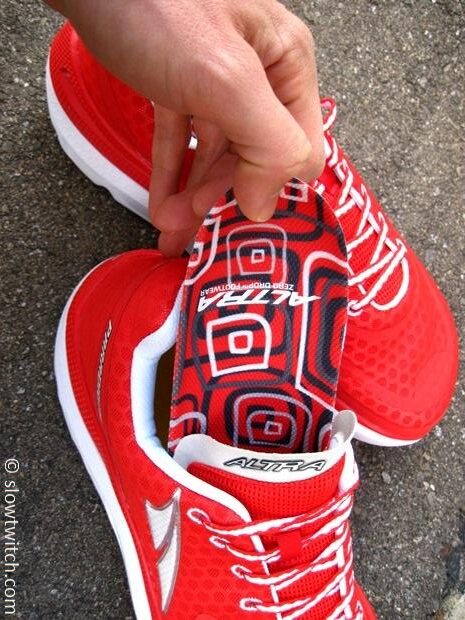
I wanted a comparison, so I also measured my Hoka Conquest. This is one of the lighter and thinner (ish) models from Hoka’s line, with an advertised heel height of 29mm and forefoot height of 25mm. I expected my measurement for this heel stack height to exactly match my Paradigms (29mm). Curiously, however, my measurement came out at 33mm high (sans sockliner), nearly matching the 34mm height I saw listed by Running Warehouse (a large retailer that measures stack heights on every shoe). The 1mm discrepancy could very well be due to measuring error on either their or my part.
How is that so? How are we 5mm away from Hoka’s number? I haven’t a clue. Note, I’m not suggesting that any of these stack heights are inherently good or bad – I’m just shining a light on the fact that we have some work yet to do with agreeing upon and sticking to real standards for communicating something as important as a shoe’s thickness.
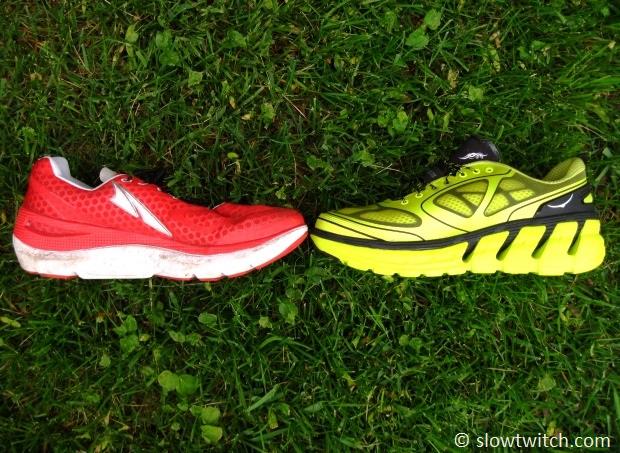
Pictured above: Altra Paradigm (left) vs Hoka Conquest (right).
So, it appears that the Paradigms are indeed thicker than your average running shoe, but a few millimeters shy of Hoka’s fat-boy thickness.
In terms of the shoe’s shape, this Altra looks to be rather curve-shaped. In comparison, the Conquest looks decidedly straight. Note that the elastic laces in the photo below are my own doing, and not included with the Paradigms.
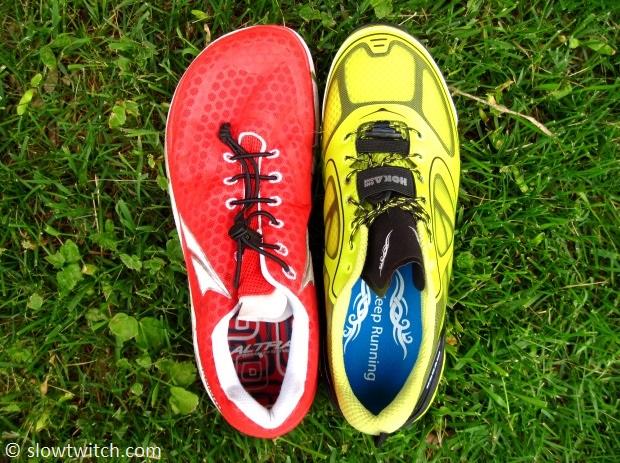
Looking at the bottom, we can see that Altra used their trademark foot-shaped sole and wide toe box.

Fit and Sizing
In my experience, the Paradigm fits on the large size. I often find myself in size 11 – 11.5, with the occasional 12 for very small-fitting shoes. In these Altra’s, I fit perfectly in a 10.5 – a very rare size for me. If I wanted to run in this shoe during the winter with very thick socks, I would likely opt for an 11.
The upper of the Paradigm is soft and friendly, offering plenty of room. Altra does not offer any width options, but I’d be surprised if many folks found them to be too narrow. It’s the narrow-footed among you that may have trouble with too much room – try before you buy.
I did enjoy one feature of the tongue very much – it’s sewn in on one side. Some manufacturers go for a ‘burrito-wrap’ tongue, a la Brooks. Altra’s design has much the same effect, keeping the tongue nicely in place, and preventing bunching during quick tri transitions. {The author mentally clicks ‘like’ button}
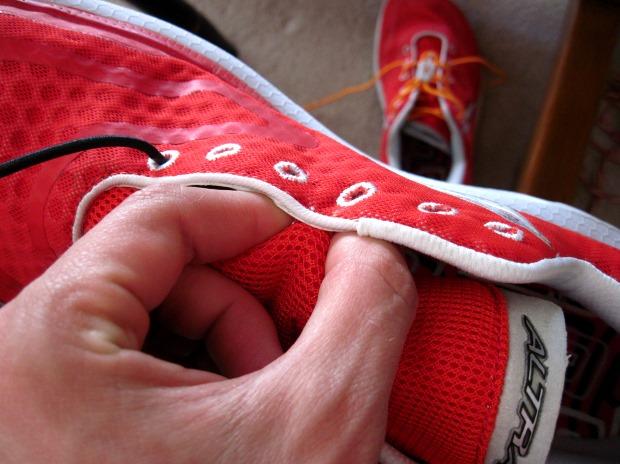
Running Impressions
While the Paradigm is more of a road-intended shoe, I used it for a variety of road and trail miles. Overall, the shoes feel like they look: Like neutral shoes on ‘roids. They’re thick, and you notice it. That’s not a bad thing, it just takes a few miles to get used to. I normally run in low or zero-drop shoes, so the flat heel-forefoot did not throw any wrenches for me.
I had a handful of people ask my opinion of these shoes compared to Hoka (as I’m assuming many of you are wondering). Do they feel the same? Are they better/worse/other? To me, they feel fairly similar to the Bondi 3. In both shoes, I feel like I’m riding mostly ‘on top’ of the shoe. In contrast, with the Stinsons and Conquests, I feel much more ‘in’ the shoe. There really isn’t a big take-home here that you can gather from a written review; shoes must be fitted in-person for a fair evaluation.
Given this shoe’s purpose and target customer, I think they did very well with the execution. If you want zero drop and cushion, this is it. The thing to understand, however, is that this is not a stability shoe. Though it is thick, that does not necessarily mean it offers more protection in a ‘guidance’ sense – for those that need it. There’s no variable foam density, nor is there any sort of last shaping voodoo to guide the foot. If I had to take a guess, that’s the next shoe on Altra’s radar. Take their stability-intended Provision 1.5 or Repetition and pump them up to the sky. Many Hoka customers that I speak with are just as interested in the stability/guidance features as they are the thickness, and I think Altra would be missing an opportunity if they don’t further pursue that market in addition to us Neutral Runners.



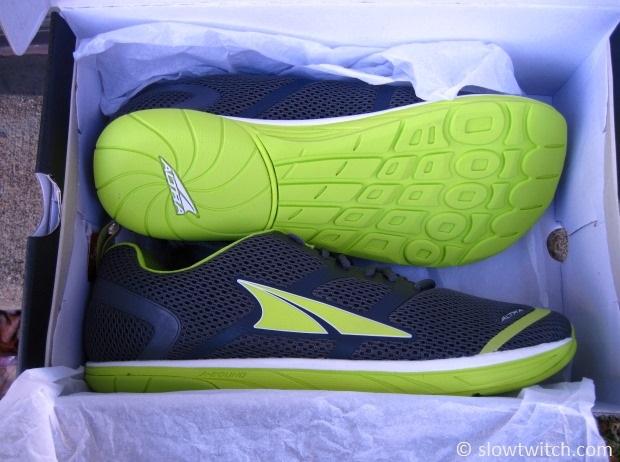
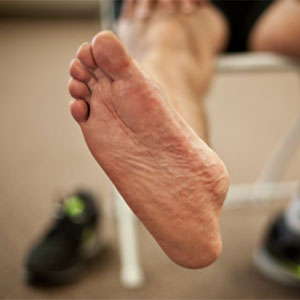
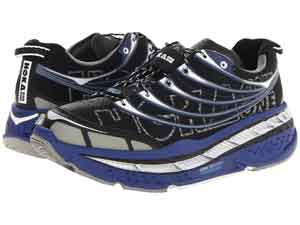
Start the discussion at slowtwitch.northend.network